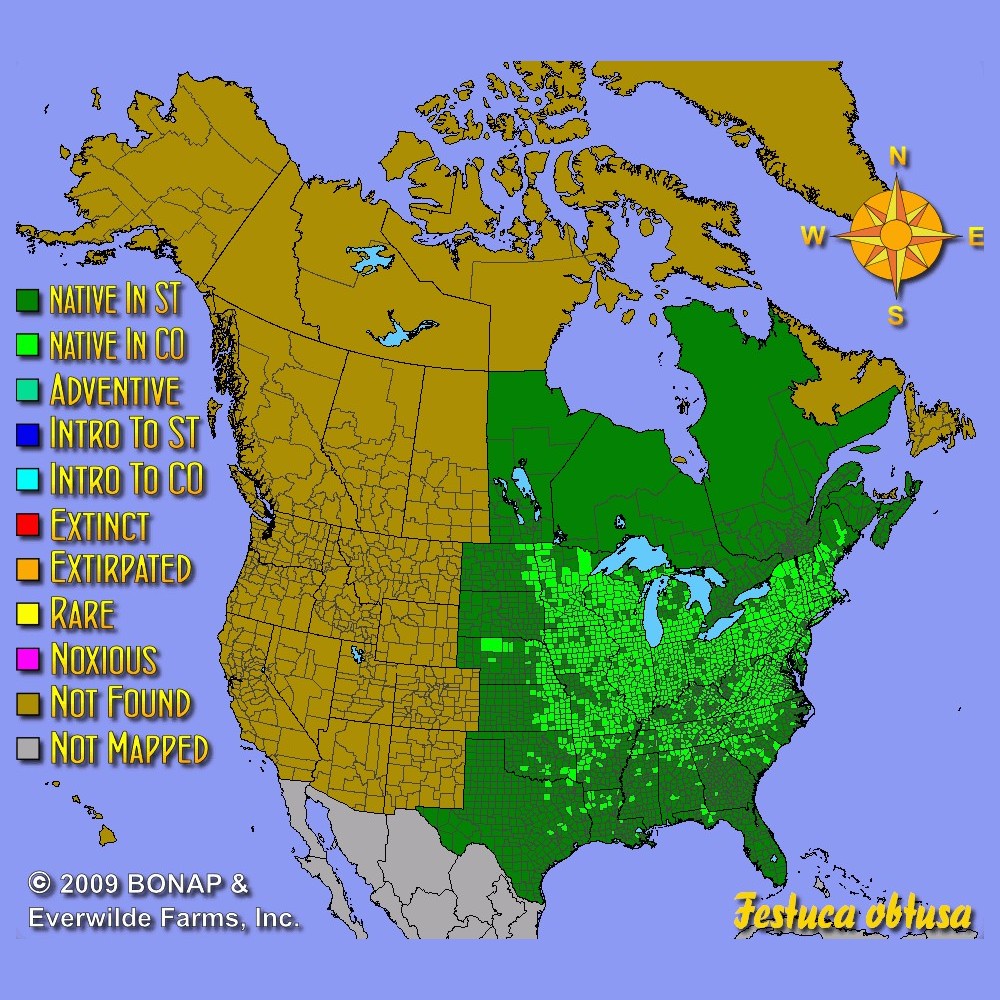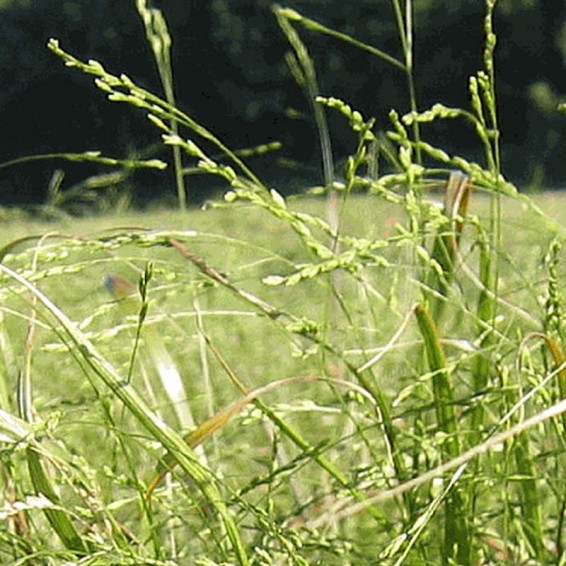Nodding Fescue Seeds
- HOW TO GROW
- FAST FACTS
- REVIEWS
HOW TO GROW
Sowing: Direct sow nodding fescue grass seeds either in late fall or early spring. Press the seed into the surface of the soil, compacting the soil very firmly. For spring planting, mix the Festuca Obtusa seeds with moist sand and store in the refrigerator for 60 days before planting. Keep the soil lightly moist until germination.
Growing: Water seedlings occasionally until they become established. Mature plants tolerate drought, though they prefer average or moist soil. This plant spreads eventually. It makes an excellent shade ground cover, as well as providing erosion control.
Seed Saving: At the end of the season, the seed heads will begin to ripen and turn color. Strip the seed from the stem, and separate the seed from the plant material. Store the seed in a cool, dry place.
FAST FACTS
Latin Name: Festuca obtusa
Species Origin: US Native Grass or Sedge
Type: Native Grasses, Cool Season
Life Cycle: Perennial
USDA Zones: 3, 4, 5, 6, 7, 8, 9
US Regions: Plains/Texas, Midwest, Northern, Northeast, Southeast
Seeds per Ounce: 20,000
Stratification: Cold/Wet for 8 Weeks
Germination Ease: Stratify 8 Weeks
Sunlight: Part Sun, Shade
Height: 24 Inches
Color: Green, Brown
Bloom Season: Blooms Early Summer
Not your Common Wild Grass !
Despite feedback from my neighbors, saying why do you want these interesting weeds, I let a few thousand seeds go on my barren, bad fill mound. I gave them miracle grow in a plugged style planting on the nasty hill. let me tell you, by itself, this plant has character . It truly nod, or bends with every stem and seed head. It forms a basal clump and the shoots follow in a month. Do not plant them together ! One here and there of you'll have a field of arching seed heads butting in on each. So one out one thousand or so popped. For the price I paid, I can re-read "Weeds of the Northeast "again, knowing I successfully naturalized this unique wild grass. Thank you!!
DESCRIPTION

HOW TO GROW
Sowing: Direct sow nodding fescue grass seeds either in late fall or early spring. Press the seed into the surface of the soil, compacting the soil very firmly. For spring planting, mix the Festuca Obtusa seeds with moist sand and store in the refrigerator for 60 days before planting. Keep the soil lightly moist until germination.
Growing: Water seedlings occasionally until they become established. Mature plants tolerate drought, though they prefer average or moist soil. This plant spreads eventually. It makes an excellent shade ground cover, as well as providing erosion control.
Seed Saving: At the end of the season, the seed heads will begin to ripen and turn color. Strip the seed from the stem, and separate the seed from the plant material. Store the seed in a cool, dry place.
FAST FACTS
Latin Name: Festuca obtusa
Species Origin: US Native Grass or Sedge
Type: Native Grasses, Cool Season
Life Cycle: Perennial
USDA Zones: 3, 4, 5, 6, 7, 8, 9
US Regions: Plains/Texas, Midwest, Northern, Northeast, Southeast
Seeds per Ounce: 20,000
Stratification: Cold/Wet for 8 Weeks
Germination Ease: Stratify 8 Weeks
Sunlight: Part Sun, Shade
Height: 24 Inches
Color: Green, Brown
Bloom Season: Blooms Early Summer
Reviews
Review
Not your Common Wild Grass !
Despite feedback from my neighbors, saying why do you want these interesting weeds, I let a few thousand seeds go on my barren, bad fill mound. I gave them miracle grow in a plugged style planting on the nasty hill. let me tell you, by itself, this plant has character . It truly nod, or bends with every stem and seed head. It forms a basal clump and the shoots follow in a month. Do not plant them together ! One here and there of you'll have a field of arching seed heads butting in on each. So one out one thousand or so popped. For the price I paid, I can re-read "Weeds of the Northeast "again, knowing I successfully naturalized this unique wild grass. Thank you!!



